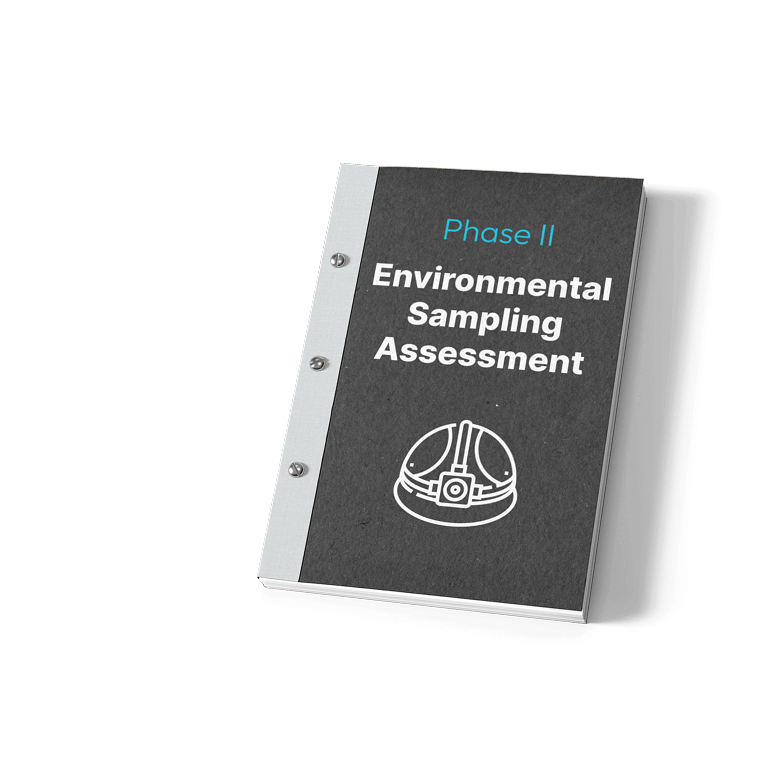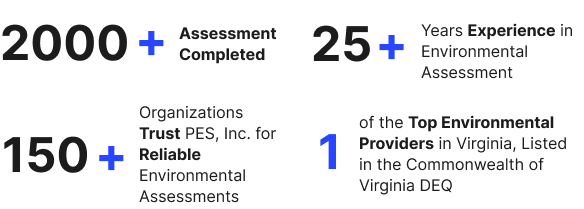
Still Unsure About the Land?
Uncover the data that confidently clears doubts about contaminated land

If You Are Here...
- You’re still UNSURE after your Phase I ESA AND YOU want real data so you can make a confident move, not just rely on assumptions….
- You still concern about the possible contamination AND You need clarity before investing more TIME & MONEY into the Land…
- You want a solid proof that the property is SAFE before closing the deal…
You’re on the RIGHT Page. Read On.
The Solution:
PES's Phase II ESA
We Specialize in Delivering Fast, Reliable and Cost-Effective Environmental Assessments for Real Estate Professionals, Lenders, and Property Investors over 27 Years.
Whether you need confirmation after a Phase I ESA or targeted testing for known issues, our Phase II ESA deliver clear, lab-backed reports that help you:
Identify The Presence of Contamination
We collect and analyze soil, water, and vapor samples to determine if contamination exists, where it’s coming from, and how severe it is. No more guesswork—just real data.
Meet Regulatory & Lender Requirements
Our reports ensure compliance with industry and legal standards, keeping your project on track. Avoiding Delay in Loans, Permits, or Development.
Make Confident, Safe Decisions
Whether remediation is needed or the site is clear, you’ll have the insights to move forward with certainty. Backed by expert guidance every step of the way.
Want To Make SMART Investment Now? You’re Just ONE-CLICKED Away
Here’s What You’ll Get...
Sampling and Analysis
We collect soil, groundwater, surface water, and air samples to detect contaminants like VOCs, heavy metals, and petroleum products, partnering with accredited labs for precise analysis.
Geophysical Survey
Our Phase I ESA reports are detalled and easy to understand, providing clear findings and actionable recommendations. If we identify any environmental concerns, we'll provide advice on the next steps, such as recommending further testing or investigating remediation options.
Health and Safety Considerations
All procedures follow strict health and safety guidelines to protect both our team and clients from exposure to hazardous materials.
Targeted Testing
In some cases, geophysical methods are used to detect underground contamination or structures, such as buried tanks, before further excavation.
Regulatory Compliance
We adhere to local, state, and federal regulations, ensuring all testing and sampling meet the required legal and environmental standards.
Your Trusted Partner for Environmental Assessments
Property Environmental Services (PES, Inc.) has helped hundreds of real estate professionals, banks, and developers identify environmental issues before they become problems. With a team led by certified experts, we deliver clear, timely assessments that keep your projects moving forward.
Our Service Available NATIONWIDE in the United States.


See What Our Customers Have to Say
PES, Inc. is proud of the work we do. We are dedicated to delivering you a complete, professional, and valuable product. Our accomplishments are reflected in words from a sample of our clients. “Property Environmental Services (PES) has served my company for over fifteen years as our environmental consultant for pre-purchase/pre-renovation environmental due diligence studies and asbestos identification surveys. Their reports have been completed to meet the demands of our banks and lending partners, which is critical to our document package. I have been impressed with how motivated they are to meet our various deadlines for report turnaround and how quickly they respond with reliance letters and environmental opinion letters as requested. PES operates with regard to our environmental consulting needs as if they take great pride in our success, and this makes an excellent consultant and team member.”
Jim Abdo, CEO, Abdo Development, LLC
★★★★★
I have been using Property Environmental Services as a primary vendor for several years for environmental due diligence studies required in connection with commercial real estate transactions. I have found PES to consistently provide quality and thorough information, always on a timely basis. This is important to our lending process as all paperwork and submittals must meet tight commercial real estate loan closing deadlines. PES is very responsive in their communications.
Timothy M. Aldinger, Senior Vice President, United Bank
★★★★★
Property Environmental Services has provided Broadway, LLC with environmental consulting (Phase I, Phase II, Asbestos Surveys) since we started investing in commercial development sites in the Washington, D.C. Region. We have found that they are quite responsive to meet our timelines on study completion and report delivery. PES communicates quickly when there is an environmental question or concern from our staff or from our banks and lending team about a particular project. appreciate the personal service they provide and the dedication they exhibit.
Marjorie A. Brown, Regional Director, Broadway, LLC
★★★★★
Property Environmental Services has been a key vendor for Access National Bank and Atlantic Union Bank for many years. During this time our commercial real estate and SBA lending staff have appreciated the diligent environmental studies and reports they have conducted for us. PES is very responsive in their communications with our bank and we appreciate that they are always thinking about our best interest concerning loan closing deadlines and product costs. With vendors and consultants such as PES to rely on we become a stronger institution.
Robert Shoemaker, Executive Vice President & Chief Commercial Lending Officer. ANB and AUB
★★★★★
IMAGINE...You're One of Them...
Your Property Deserves a Thorough Environmental Check
After completing over 2,000 environmental assessments since 1997, we know how to uncover hidden property risks — quickly, accurately, and affordably.
We Will Get Back To You in the Next 12 hours!








